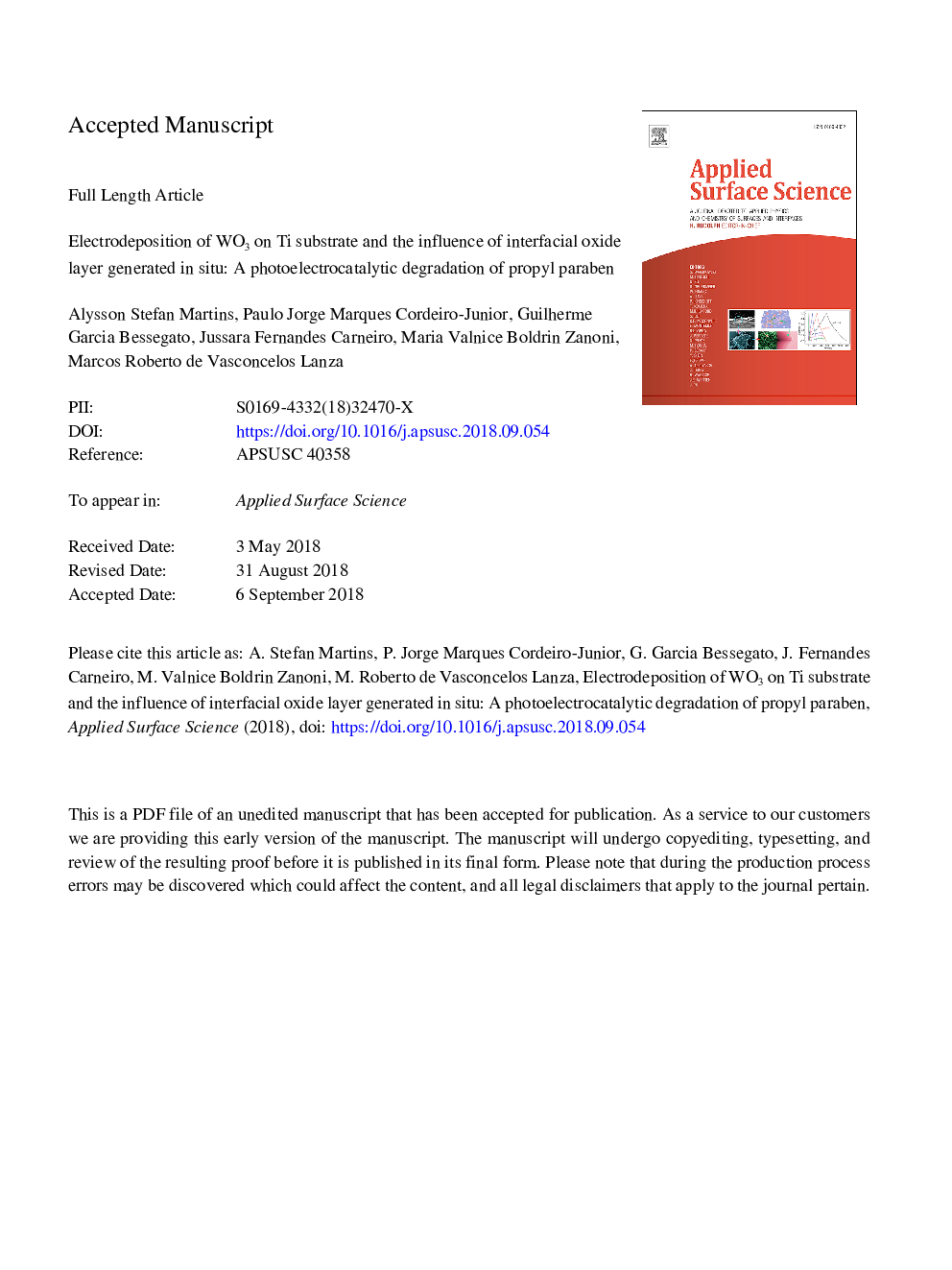| کد مقاله | کد نشریه | سال انتشار | مقاله انگلیسی | نسخه تمام متن |
|---|---|---|---|---|
| 10155086 | 1666336 | 2019 | 37 صفحه PDF | دانلود رایگان |
عنوان انگلیسی مقاله ISI
Electrodeposition of WO3 on Ti substrate and the influence of interfacial oxide layer generated in situ: A photoelectrocatalytic degradation of propyl paraben
دانلود مقاله + سفارش ترجمه
دانلود مقاله ISI انگلیسی
رایگان برای ایرانیان
کلمات کلیدی
موضوعات مرتبط
مهندسی و علوم پایه
شیمی
شیمی تئوریک و عملی
پیش نمایش صفحه اول مقاله

چکیده انگلیسی
Ti/TiO2-WO3 photoanode composites were successfully synthesized through a simple electrochemical deposition of WO3 films on Ti substrate. The electrochemical deposition was evaluated in the following periods: 2.5; 5; 10; 20; 30; 45 and 60â¯min, and led to the generation of the electrodes denoted E2.5; E5; E10; E20; E30; E45 and E60, respectively. The performance of the electrodes was assessed by monitoring the photoelectrocatalytic oxidation of 50â¯mgâ¯Lâ1 of propyl paraben under UV-Vis light irradiation. Due to its autoxidation, the Ti substrate was found to exert a significant influence over the photoactivity, yielding a thin and photoactive interfacial layer of titanium oxide after heat treatment at 450â¯Â°C. More importantly, the photoactivity of the electrodes was strictly dependent on the content of WO3 as well as on its interaction with titanium oxide. In a good synergy of WO3-TiO2 semiconductors, lower amounts of electrodeposited W (<0.8%), as in the case of E2.5 and E5 electrodes, operate as electron scavengers, leading to high photocurrent values. Conversely, larger amounts of W generate centers of charge recombination, resulting in a substantial decrease in photocurrent values. The photoelectrocatalytic application of the best electrode (E2.5) resulted in a complete removal and mineralization of propyl paraben in only 3â¯h of experiment under optimized conditions (pH 2 and Eâ¯=â¯+0.5â¯V). This study is regarded an important step toward the development of photoanodes involving relatively fewer stages. Remarkably, apart from enabling the generation of TiO2 in situ, the method favors the synergy of the semiconductors as it helps to determine the ideal amount of WO3 deposited on the surface of the electrodes.
ناشر
Database: Elsevier - ScienceDirect (ساینس دایرکت)
Journal: Applied Surface Science - Volume 464, 15 January 2019, Pages 664-672
Journal: Applied Surface Science - Volume 464, 15 January 2019, Pages 664-672
نویسندگان
Alysson Stefan Martins, Paulo Jorge Marques Cordeiro-Junior, Guilherme Garcia Bessegato, Jussara Fernandes Carneiro, Maria Valnice Boldrin Zanoni, Marcos Roberto de Vasconcelos Lanza,